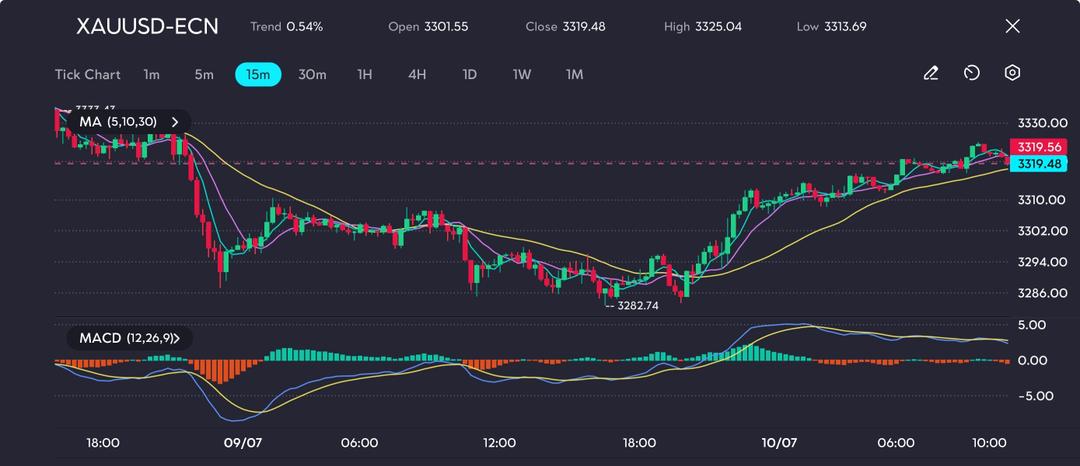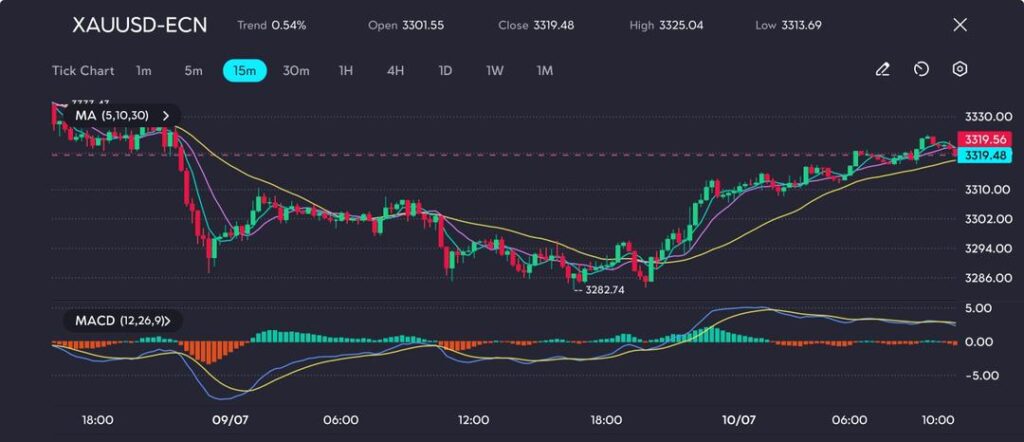Sri Lanka faces a 30% tariff imposed by Trump in ongoing trade relations with the US
The yield on the U.S. 10-year note auction decreased from 4.421% to 4.362%
Gold Prices On The Rise
Gold prices surpassed $3,300, driven by trade worries and a weaker USD. The drop in US bond yields and the possibility of Fed rate cuts are boosting gold’s appeal as a safe haven. New US tariffs have created challenges for several Asian economies, imposing unexpected duties. However, countries like Singapore, India, and the Philippines could benefit if tariff negotiations improve, potentially gaining economic advantages as trade dynamics evolve. These financial updates illustrate the current trends in the global economy. Various currencies and commodities are responding notably to market conditions and policy changes, influencing economic strategies worldwide. The drop in bond yields—from 4.421% to 4.362% on the 10-year US Treasury note—indicates that investors are prioritizing safety over risk. Lower returns on these benchmark bonds often signal increased buying. This can stem from softened inflation expectations, changing growth forecasts, or a belief that interest-rate hikes may be slowing. Currently, the market appears to be adjusting ahead of anticipated policy changes from the Federal Reserve.Currency And Bond Market Dynamics
As the market adjusts, the US dollar has weakened, causing the euro to rise toward 1.1750. The euro tends to gain when there are signs that the Fed may be taking a more flexible approach. Currency movements are heavily dependent on expectations about future rates. The British pound has also gained strength, reaching 1.3605, benefiting from a weaker dollar and stable economic data from the UK. Gold prices above $3,300 highlight strong demand for safer investments. This price increase closely aligns with falling Treasury yields and a weaker dollar. Historically, when investors reassess inflation or seek protection from geopolitical and economic uncertainty, gold becomes increasingly attractive. In this case, concerns about trade and caution regarding US monetary policy are driving this demand. On a broader scale, new tariffs from Washington are creating short-term challenges for several Asian economies. However, not all countries in the region will be affected equally. Some nations may struggle, while others—like India, Singapore, and the Philippines—could benefit over the medium term, depending on how trade routes and supply chains are adjusted. This shift could enhance their exports or attract more investments. Currently, the data and market activity suggest a shift in expectations. With the Fed seeming less inclined to tighten rates aggressively, asset prices are reflecting lowered real yield forecasts. This makes shorter-duration strategies more appealing in fixed income. In the FX market, we should prepare for increased volatility linked to changing policy narratives. For those focused on short-term movements, understanding the relationship between prices and rate expectations is vital—it’s changing daily. Movements in gold, bond markets, and FX are interconnected and reflect the same recalibration. We must stay alert and not rely too heavily on outdated trends. The range across major currency pairs has already shifted, not structurally, but certainly in terms of tone. As we approach upcoming economic releases and statements from central banks, we should observe how markets respond rather than just focusing on the numbers. It’s not just about what is said, but also about what the markets are interpreting. This difference often presents opportunities. Create your live VT Markets account and start trading now.Gold Bounces Back, But Trade War Exhaustion Limits Gains

Gold prices nudged higher on Thursday, supported by a slight dip in the US dollar and Treasury yields. However, gains were restrained as markets showed signs of fatigue towards President Trump’s increasingly aggressive trade measures.
Spot gold climbed 0.3% to $3,322.46, while US gold futures rose to $3,331, marking a cautious recovery from the week’s low of $3,282.74. Despite the swirl of geopolitical developments, momentum remained modest, reflecting a cautious investor mood.
Louder Tariff Rhetoric, But Diminishing Impact
President Donald Trump escalated his global trade offensive, announcing fresh 50% tariffs on US copper imports and new duties on goods from Brazil, set to take effect on 1 August. A further seven countries were added to the list on Thursday, expanding the tariff target group to 21 nations, including South Korea and Japan.
Yet financial markets barely reacted. Analysts pointed to a growing sense of ‘tariff fatigue’, where traders have become desensitised to the near-constant barrage of protectionist announcements.
Technical Analysis
Gold has mounted a modest rebound, ending the day at 3,319.48, an intraday gain of 0.54%. Price action indicates a steady recovery from the day’s low of 3,282.74, with bullish pressure gradually building, evidenced by a series of higher lows and highs. The 5-, 10-, and 30-period moving averages have now formed a bullish crossover structure, signalling short-term upward potential.

The MACD has moved above the neutral line and remains in positive territory. However, flattening histogram bars hint at slowing momentum as the price nears a potential resistance zone between 3,325 and 3,330, a region that previously acted as support before turning into resistance.
FOMC Minutes Provide Little Inspiration
The minutes from Wednesday’s Federal Reserve meeting offered few surprises. Only ‘a couple’ of members showed support for a rate cut as early as July, while the majority preferred to hold steady for now, citing inflation concerns linked to trade tariffs. The next Federal Open Market Committee (FOMC) meeting is scheduled for 29–30 July and could present the next significant trigger for gold.
Until then, gold prices are likely to remain range-bound, driven more by technical indicators and near-term softness in the dollar than by fresh concern over the escalating trade front.
Create your live VT Markets account and start trading now.




